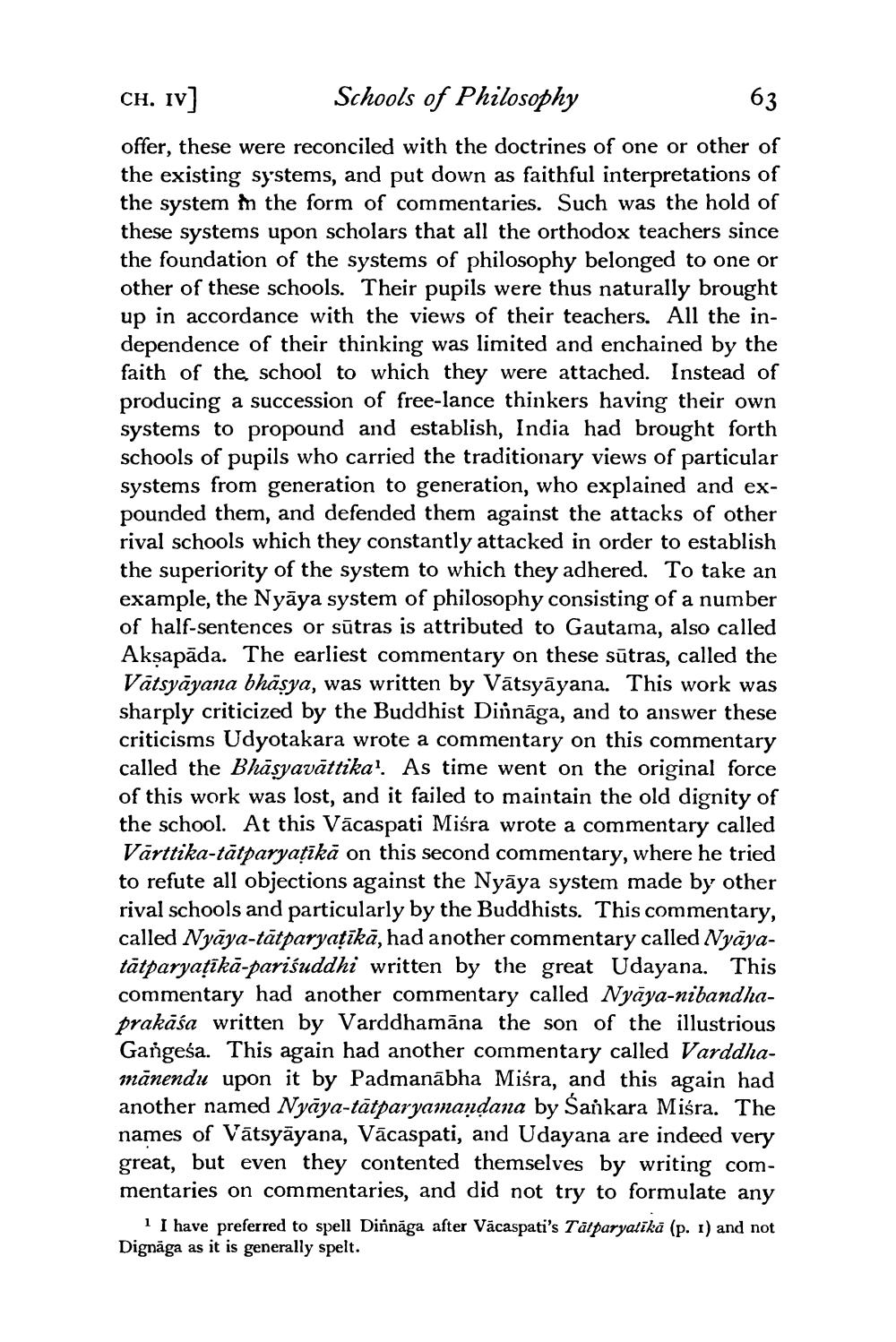________________
CH. IV]
Schools of Philosophy
offer, these were reconciled with the doctrines of one or other of the existing systems, and put down as faithful interpretations of the system in the form of commentaries. Such was the hold of these systems upon scholars that all the orthodox teachers since the foundation of the systems of philosophy belonged to one or other of these schools. Their pupils were thus naturally brought up in accordance with the views of their teachers. All the independence of their thinking was limited and enchained by the faith of the school to which they were attached. Instead of producing a succession of free-lance thinkers having their own systems to propound and establish, India had brought forth schools of pupils who carried the traditionary views of particular systems from generation to generation, who explained and expounded them, and defended them against the attacks of other rival schools which they constantly attacked in order to establish the superiority of the system to which they adhered. To take an example, the Nyāya system of philosophy consisting of a number of half-sentences or sūtras is attributed to Gautama, also called Akṣapāda. The earliest commentary on these sūtras, called the Vatsyayana bhāṣya, was written by Vatsyāyana. This work was sharply criticized by the Buddhist Dinnaga, and to answer these criticisms Udyotakara wrote a commentary on this commentary called the Bhasyavättika1. As time went on the original force of this work was lost, and it failed to maintain the old dignity of the school. At this Vācaspati Miśra wrote a commentary called Värttika-tātparyaṭīkā on this second commentary, where he tried to refute all objections against the Nyaya system made by other rival schools and particularly by the Buddhists. This commentary, called Nyaya-tatparyaṭīkā, had another commentary called Nyāyatātparyaṭīkā-parisuddhi written by the great Udayana. This commentary had another commentary called Nyāya-nibandhaprakāśa written by Varddhamana the son of the illustrious Gangesa. This again had another commentary called Varddhamänendu upon it by Padmanabha Miśra, and this again had another named Nyāya-tātparyamaṇḍana by Śankara Miśra. The names of Vatsyāyana, Vācaspati, and Udayana are indeed very great, but even they contented themselves by writing commentaries on commentaries, and did not try to formulate any
133
63
1 I have preferred to spell Dinnaga after Väcaspati's Tatparyatīkā (p. 1) and not Dignaga as it is generally spelt.




